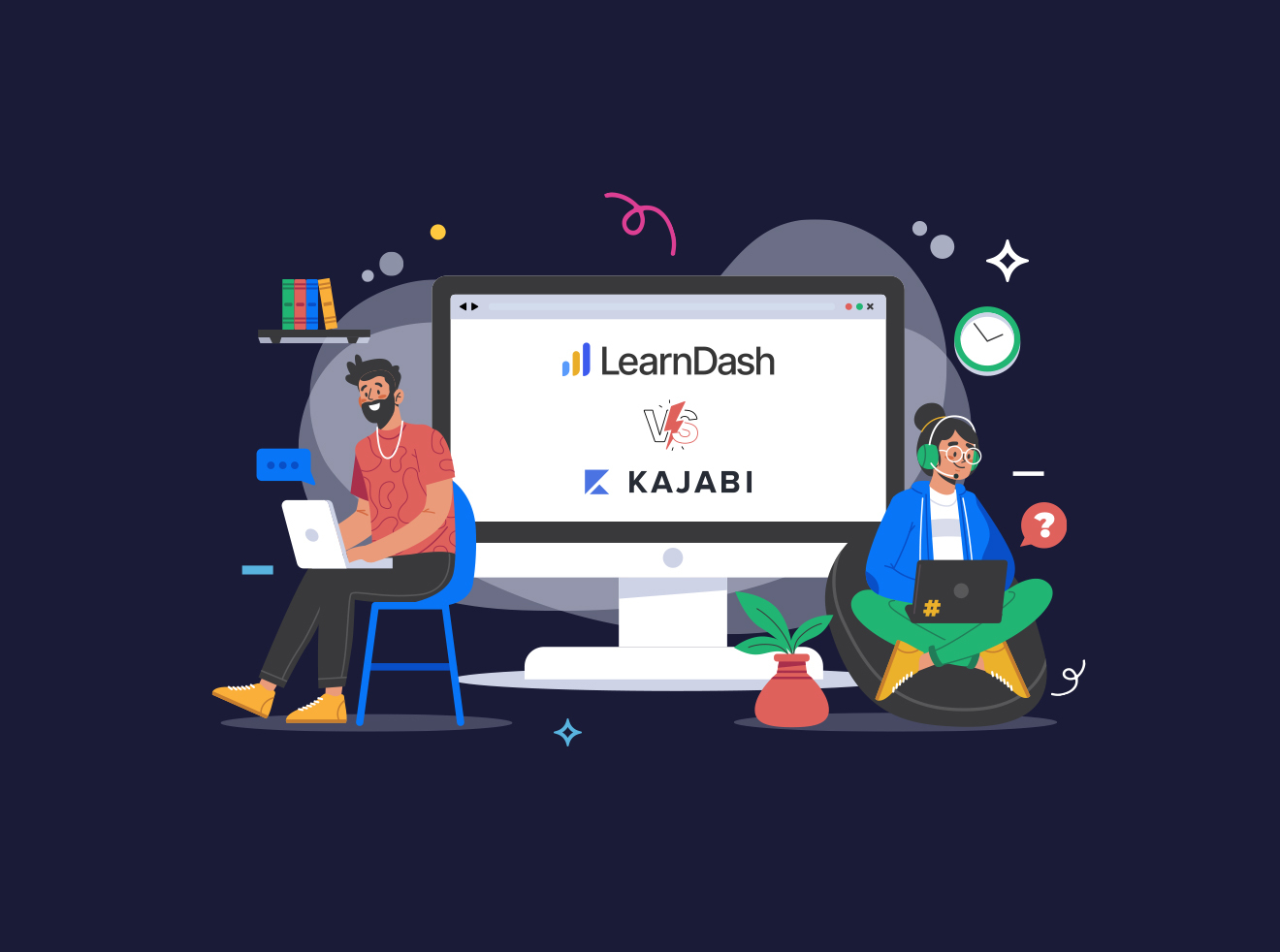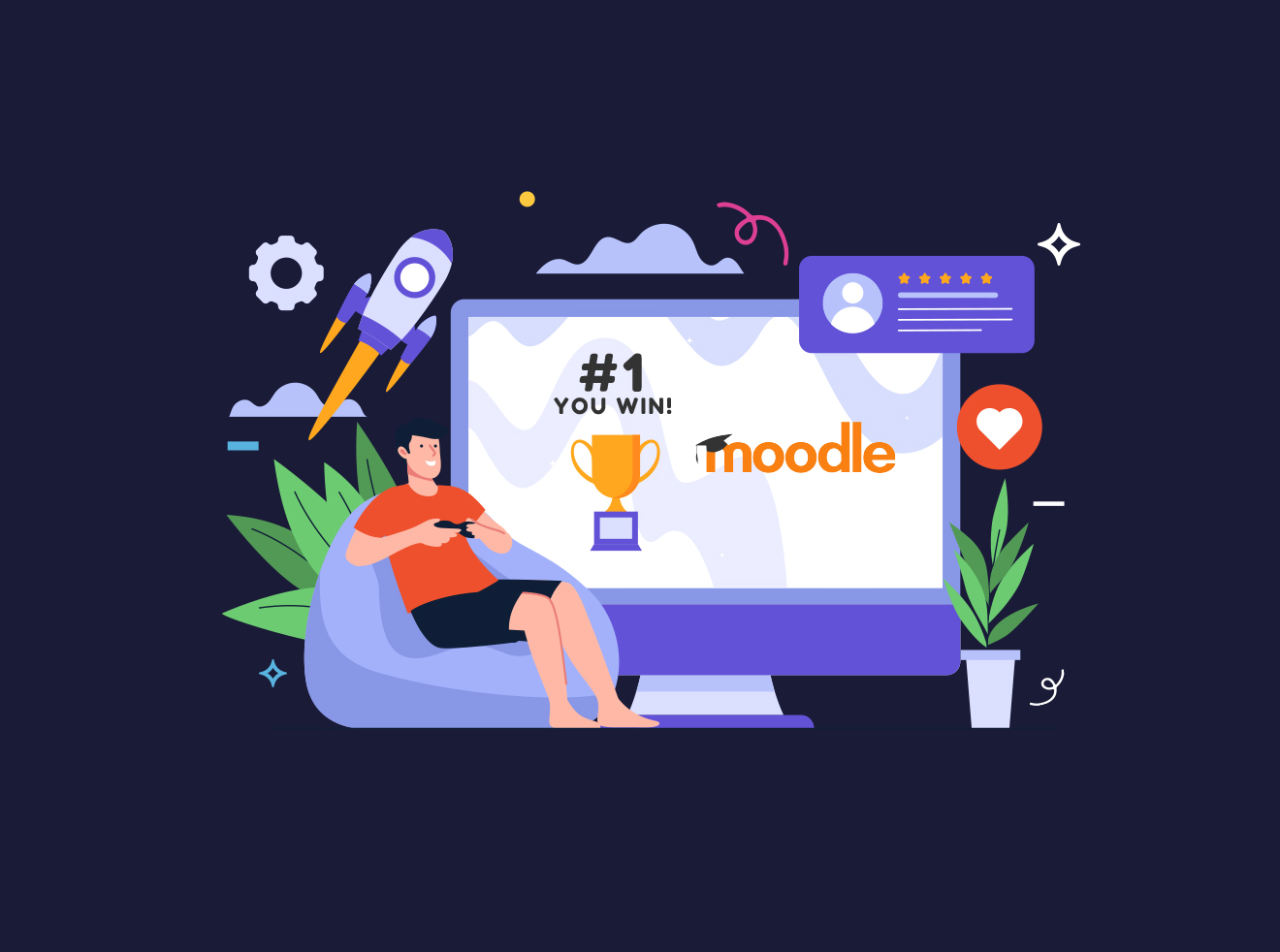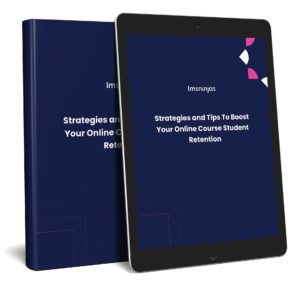Now that the chalkboard has been replaced by the click of a mouse, learning has taken on a whole new dimension. We’re moving beyond traditional classrooms and textbooks and into a world of online education where online course authoring tools determine the way we learn. In short, they are the building blocks for creating engaging and interactive learning experiences.
Course authoring tools make learning fun, easy, and accessible to anyone with a computer or smartphone.
In this article, we’ll take a look at how you can leverage them in your own projects. Whether you’re a teacher, a school, or just an expert thinking about selling an online course, get ready to explore some of the best course authoring tools you can use to create your eLearning content. We’ll be diving into the world of H5P, Articulate Storyline, Canva, Adobe Captivate, and more.
So, without further ado, let’s discover how these tools are changing the way we learn and teach, making education not only better but also a whole lot more fun!
The Role of Course Authoring Tools
By offering a range of tools for creating interactive content such as quizzes, simulations, presentations, games and more, course authoring tools turn passive content consumption into active engagement. Learners are no longer mere spectators; they become active participants in their own learning journeys.
This interactivity not only sustains interest but also deepens comprehension and retention of the material. Consequently, course authoring tools act as the bridge that connects instructors with learners, creating an immersive and memorable educational experience.
Educators can design lessons that cater to different learning styles, from visual to auditory and kinesthetic. This adaptability ensures that no learner is left behind. Moreover, course authoring tools simplify the creation of rich, multimedia content. Instructors can seamlessly integrate videos, images, animations, and audio, transforming complex topics into easily digestible formats. This multimedia approach enhances engagement and comprehension, making learning an enjoyable journey.
Additionally, these tools offer a structured framework for organizing and presenting content, helping educators maintain a logical flow and coherence in their courses. As a result, educators are not only teachers but also curators of knowledge, thanks to the empowering capabilities of course authoring tools.
Key Features to Look for in Course Authoring Tools
When you’re on the hunt for the perfect course authoring tool, it’s like shopping for the best tool in your toolbox. You want one that fits your needs like a glove. To help you find that ideal match, here are some key features you should keep an eye out for:
Ease of Use:
A friendly, intuitive interface is a must-have. You don’t want to spend hours trying to figure out how to use the tool. Look for a platform that lets you create content without pulling your hair out.
Interactivity Options:
Learning is all about engagement. A great course authoring tool should offer a range of interactive elements. Think quizzes, surveys, drag-and-drop activities, and more. These features keep learners involved and interested.
Multimedia Support:
We live in a multimedia-rich world. Look for a tool that can handle various types of content, like videos, images, audio, and animations. This multimedia support ensures your courses are dynamic and visually appealing.
Collaboration Features:
If you’re working with a team, collaboration is crucial. Seek tools that allow multiple authors to work together seamlessly, making course creation a collaborative effort.
Accessibility:
Ensure the tool supports accessibility standards to cater to all learners, including those with disabilities. It’s vital to create courses that are inclusive and accessible to everyone.
Cost and Licensing:
Consider your budget. Some tools are subscription-based, while others are one-time purchases. Be sure to understand the pricing model and licensing terms to find what fits your budget.
Mobile-Friendly:
With the rise of mobile learning, it’s crucial that your chosen tool creates course content that work seamlessly on smartphones and tablets.
Support and Training:
Don’t forget about the support and training offered by the tool’s provider. Excellent customer support and training resources can make a world of difference when you encounter challenges.
H5P: Interactive Content Made Easy
H5P is a game-changer in the world of online education. It’s a user-friendly, open-source tool designed to make creating interactive content a breeze for educators and content creators. With H5P, you can transform ordinary web content into engaging learning experiences without the need for advanced technical skills.
What sets H5P apart is its versatility—it offers a wide range of content types that can be effortlessly embedded into your online courses. These content types include interactive videos, quizzes, presentations, simulations, flashcards, and more. Each content type is like a building block that you can easily integrate into your course materials, adding interactivity and engagement.
The advantages of incorporating H5P into online courses are manifold. First and foremost, H5P fosters engagement by making learning interactive and participatory. It promotes active learning and enhances retention through hands-on experiences. Additionally, H5P integrates seamlessly with popular Learning Management Systems like Moodle, WordPress based LMS through the H5P WordPress plug in, and Drupal, ensuring compatibility with existing educational platforms. Its user-friendly interface means you don’t need advanced coding skills, allowing educators to focus on content creation rather than technical complexities.
Articulate Storyline: Rich Multimedia Experiences
Articulate Storyline is a powerhouse in the world of e-learning authoring tools. It’s designed to empower educators and instructional designers to craft rich, multimedia learning experiences that engage and educate.
One of Storyline’s standout features is its animation capabilities. You can bring content to life with animations and transitions, making concepts visually appealing and easier to grasp. Branching scenarios in Storyline allow educators to create decision-based learning experiences where learners must make choices, impacting the course’s direction. This feature is fantastic for simulating real-world situations and enhancing critical thinking skills. Additionally, Storyline offers a robust assessment suite, enabling the creation of quizzes and tests with various question types, from multiple-choice to scenario-based questions. These assessments can be embedded seamlessly into your courses, allowing you to gauge learner progress and adapt content accordingly.
Storyline’s responsive design ensures that your courses look great and function flawlessly on various devices, including desktops, tablets, and smartphones. This adaptability is crucial in today’s mobile learning landscape. The tool’s user-friendly interface, coupled with a wealth of templates and assets, streamlines course development, saving time and effort for educators. In essence,
Canva: Visual Design for Learning
Canva is a game-changer when it comes to creating visually appealing course materials. Its user-friendly platform empowers educators to design professional-looking content without the need for graphic design skills. From eye-catching presentations to stunning infographics and social media posts, Canva provides a treasure trove of design templates and tools. Educators can choose from a wide array of templates tailored for educational purposes, ensuring that their course materials are not only informative but also visually engaging.
With Canva for education, educators can also use this tool to create assignments and integrate them with their LMS or collaborate on group projects directly through the platform.
Plus, Canva offers a plethora of templates that cater to educators’ specific needs. You can find templates for educational posters, lesson plans, certificates, and classroom visuals. You can learn more about how to take advantage of Canva for online courses in our previous blog article.
Best Practices for Using Course Authoring Tools
Maximizing the effectiveness of course authoring tools requires a thoughtful approach. Start by defining clear learning objectives for your course. What do you want your learners to achieve? Keep these objectives in mind throughout the content creation process to ensure your materials align with your goals.
Course structure plays a crucial role in learner engagement. Organize your content logically, breaking it into manageable sections or modules. Use headings, subheadings, and a consistent navigation structure to help learners easily find their way through the course.
Finally, don’t forget to communicate with your students, gather feedback and iterate. Continuous improvement is essential.
Future Trends in Online Course Authoring
E-learning authoring tools continue to evolve, driven by emerging trends and technologies. One significant trend is the integration of artificial intelligence (AI). AI-driven content generation can automate the creation of quizzes, assessments, and even customized learning paths based on individual learner’s progress and needs. This not only saves educators time but also personalizes the learning experience.
Adaptive learning is gaining traction as well. These systems analyze a learner’s performance and adapt the course content in real-time. If a learner excels in a particular area, the system may provide more challenging material. Conversely, if a learner struggles, it offers additional support and practice. This individualized approach enhances learner engagement and outcomes.
Microlearning is another trend, where content is broken down into small, bite-sized modules that learners can consume in short sessions. This format aligns with modern attention spans and busy schedules, making learning more accessible.
Immersive technologies such as virtual reality (VR) and augmented reality (AR) are also shaping the future of e-learning. These technologies provide interactive and experiential learning opportunities, particularly in fields like healthcare, manufacturing, and simulations.
As these trends continue to evolve, educators and instructional designers will have powerful tools at their disposal to create engaging and effective online learning experiences.
Conclusion
The potential of course authoring tools to elevate online courses is boundless. From the engaging interactivity of H5P to the multimedia prowess of Articulate Storyline, and the visual design capabilities of Canva, these tools offer educators a vibrant canvas to craft captivating learning experiences.
Are you ready to take your online courses to the next level? Our LMS experts are here to help! Just contact us and let’s discuss your project




